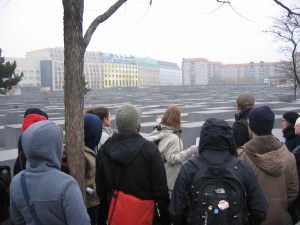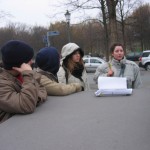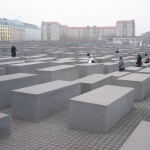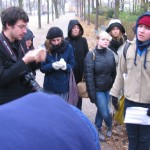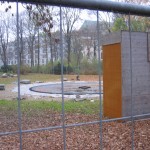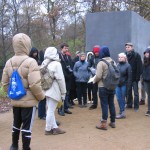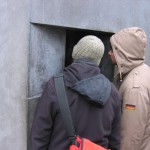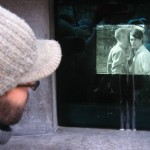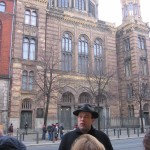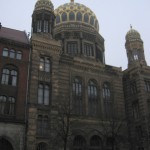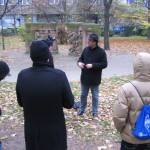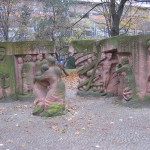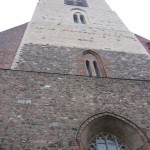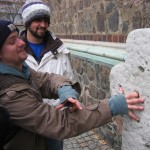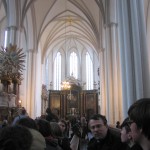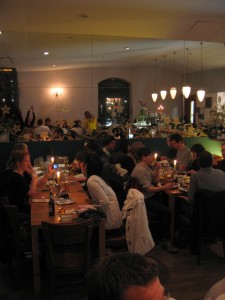A tour of three Holocaust memorials with Ryder, Cassie and Michelle
Our student-led tour this week took us to the Memorial to the Murdered Jews of Europe, a large memorial in the center of Berlin. Our guides Michelle and Cassie explained the history of the site, and encouraged us to experience it for ourselves. The memorial, designed by Peter Eisenman, consists of a field of stelae meant to engender a highly personal experience for each visitor.
Our tour also included a visit to a lesser-known, though still centrally-located, memorial: the Memorial to the Roma and Sinti Murdered by the Nazis. Because of problems with the materials, it’s still unfinished. Ryder introduced us to the history of these groups, as well as some of the controversies surrounding the building of the memorial.
We also stopped to take in the memorial honoring homosexual victims of the Holocaust, and learned a little about gay history in Berlin and Germany. Together, all three of these memorials represent important gestures by the German government toward honoring the victims of the Nazis and ensuring that such a tragedy does not occur here again. We were especially lucky that our students took the time to point out the two lesser-known memorials that augment the powerful Memorial to the Murdered Jews of Europe.
A tour of Mitte with Ulf Heinsohn
This Tuesday we took a walk through cold, foggy Mitte with Ulf Heinsohn, who helped us unpack some of the layers of meaning in the architecture around us. One of our first stops was the Neue Synagoge, or New Synagogue. Built in the 1860s, the building referred to both the history of Judaism and to its connections with Berlin: the style reflects one of the high points of Jewish culture (the Moorish architecture of the medieval period in Spain, where synagogues took on a look borrowed from Islamic architecture), but it uses a local traditional material (brick).
We also stopped at the Rosenstrasse memorial, which honors the wives of Jewish forced laborers who successfully protested their husbands’ deportation. The memorial was designed by the daughter of one of these couples.
At the Marienkirche, one of the oldest churches in Berlin, we learned how the architecture reflects the changes in the church community. The windowless front of the church was built that way in order to function as a fortress in case of invasion during the late medieval period. The cross in front of the church functioned in “trials by ordeal” — if the accused could fit their fingers in all five holes, they were considered innocent!
Our walk in the cold weather definitely earned us a delicious meal. Our group enjoyed a wonderful dinner together that night at Matzbach, one of our favorite German restaurants!
tags
the author
I'm a doctoral student at CUNY Graduate Center. I'm thrilled to be teaching the CHID Berlin program with Prof. John Toews! You can contact me at naraelle [at] gmail.com, or find out more about me at www.naraelle.net.
Blogroll
- Annie Holden's blog
- Cassie Hoeprich's blog
- Dominic Barrera's blog
- Janet Williams's blog
- Mariah Alderete's blog
- Melissa Au's blog
- Robert Hampton's blog
- UW Students Study Abroad Our students Natalie and Cassie are contributing to the official IPE student blog this fall!



